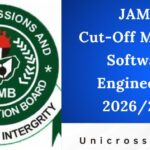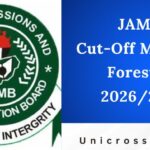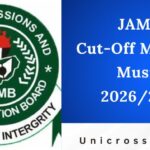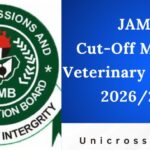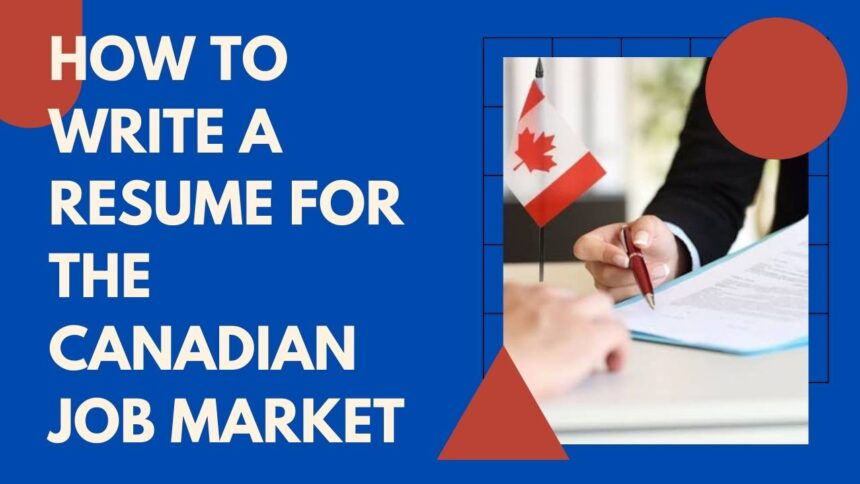Want to get your dream job in Canada? Then, it is important to have an effective resume in this competitive job market to attract the attention of employers. The problem is that writing an effective resume is quite challenging especially if you are not familiar with the Canadian market. With cultural and linguistic differences, industry-specific requirements, and ever-changing hiring trends, it’s vital to tailor your resume to the Canadian job market. In this article, we will try to answer some of the questions that applicants might face in order to write a better resume and to successfully look for a job in Canada.
About the Canadian Job Market
The labour market in Canada has had a mix of trends in recent years. On one hand, the unemployment rate has been low at about 6.1%. This implies that the labour market is very strong and has a high demand for workers. In addition, real average weekly earnings have grown by 4. 5% from the previous year to $1,232.44. This means that employers are willing to pay more for workers with high skill and experience levels. On the other hand, the number of people employed in Canada has slightly increased by 0.4% This indicates a gradual increase in job opportunities. Also, there has been no significant increase or decrease in the number of people receiving Employment Insurance benefits. This means that the job industry is not experiencing an increase in layoffs or job losses.
Canada is also experiencing skills shortages, in that employers are unable to find workers with the right skills and qualifications. This is particularly true in areas such as technology, medicine, and construction. This is why the Canadian government has come up with programs such as the Canada Job Grants for the training of workers.
Finally, the Canadian labour market offers advantages and disadvantages for job seekers. There are many jobs to fill, and yet there is a greater demand for workers. there are also requirements for workers to possess the required skills and qualifications to perform the job adequately.
What is a Canadian Resume?
A Canadian resume is a summary of the key information that emphasizes an applicant’s skills, experience, and potential as an employee in Canada. It is written in one to two pages and is intended to showcase the candidate’s fit for a particular position. The resume starts with contact information like the candidate’s name, address, telephone number, and email. This is followed by a professional summary, or career summary or career overview, that contains an overview of the candidate’s work experience, skills, and accomplishments.
Also, the work experience section is one of the most important sections of a Canadian resume, and it should be listed in reverse chronological order with the most recent at the top. The skills section should contain the candidate’s technical, language, and interpersonal skills. The education section should have information on the highest level of education attained by the candidate such as degrees, diplomas, and certifications. This section should also contain any courses or training programs that provide evidence of the candidate’s skills and competencies. Additional sections may include foreign languages, certificates, volunteer work, awards, achievements, and publications.
Furthermore, a Canadian resume should be a simple and focused document showing the reader that a candidate meets the requirements for a particular position. It should be designed in accordance with the job description and highlight the competencies, work history, and accomplishments of the candidate.
READ ALSO:
Types of Canadian Resumes
-
Chronological Resume
This format calls for the job experience to be presented starting from the most recent job and working backwards in time. It is usually limited to the last ten years of work experience. This format is preferable to those who have been working in a particular field as it demonstrates career growth and continuity. Also, include any volunteering that has been undertaken to demonstrate that you have a more diverse and dedicated engagement in the field.
-
Functional Resume
This format concentrates on the skills and abilities that are relevant to the job rather than the chronological history of employment. It is organized in specific skills or areas of expertise with sections dedicated to each skill, explaining how they were acquired and implemented. Certain skills or traits mentioned in the job description should be capitalized. Following the skills section, briefly add a work history section disclosing the job title, employer’s name, and the period of service in short statements without elaborations. This format is especially beneficial for candidates who do not have a continuous employment history, career changers, or those with a combination of unrelated experiences, as the information can be directly connected to the job.
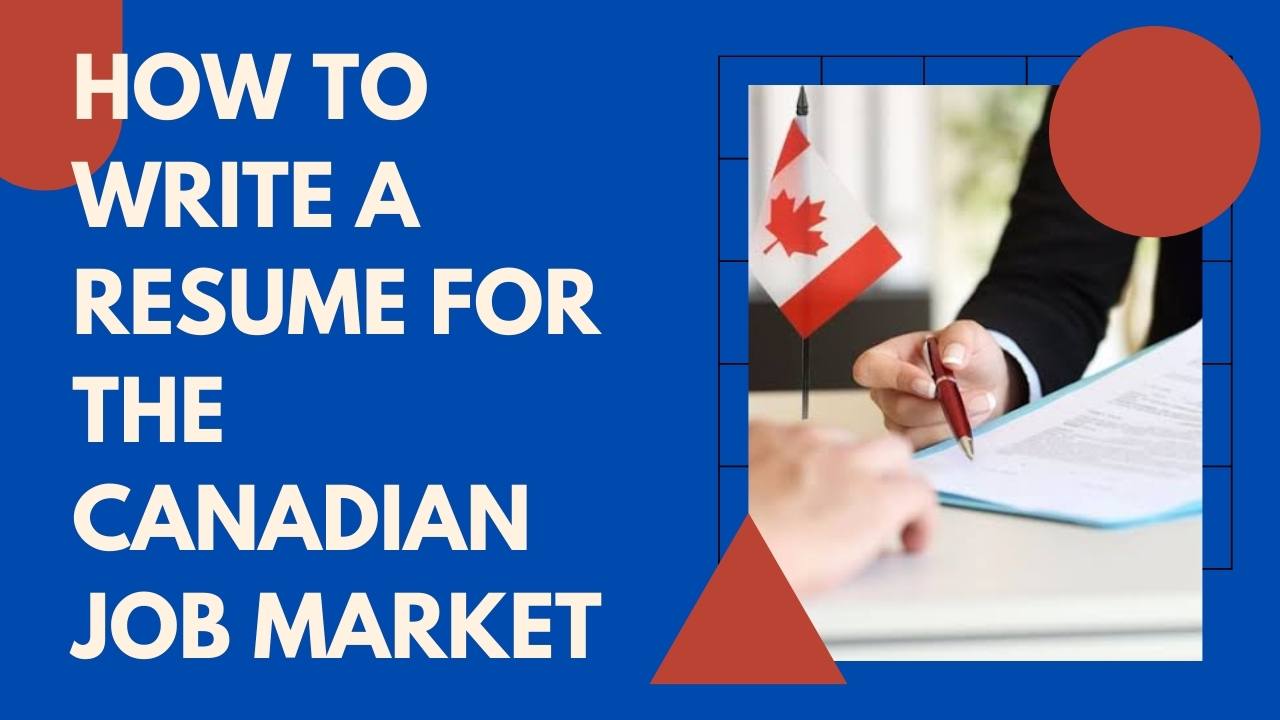
Standard Format for a Canadian Resume
-
Resume Header
Create a resume header at the top of your resume. This section should include your contact details: name, address, phone number, and e-mail address. You may also include a link to their social media profile, such as LinkedIn. The header informs the recruiter or hiring manager about the owner of the resume and contains contact details. Sometimes, your name could be in a bit bigger or bold font to show importance.
Tips on How to Write a Resume Header
-
Make Your Name Prominent
Your name should be in the largest font size used in the resume. You may capitalize it or bold it depending on your preference.
-
Create Your Header Manually
Do not use the header feature in word processing tools such as Microsoft Word or Google Docs, because ATS might not recognize the information in the header or footer. This also guarantees that your resume is read by the ATS.
-
Focus on Content Over Visuals
Do not include a photograph unless you are applying for an acting or modeling position. Employers pay attention to the skills that you have and your experience and qualifications. Save appearances for the interview stage.
-
Repeat the Header on the Second Page
If it takes two pages, repeat the header on both. Two-page resumes are commonly used for executive jobs or those with long work histories. Target a one-page resume for most positions.
-
Resume Header Content
-
Name and Job Title:
Your name should appear at the top of the page in a professional typeface and larger font size than the rest of the text. Use the same name on all professional documents. Write your current or previous job title and your license or qualification if it is applicable. e.g. Joyce Ben, Certified Graphic Designer).
-
Phone Number:
Please enter your primary cell phone number which is reachable. Prepare to answer professionally during your job search.
-
Email:
Use a professional email that contains your first and last name. Do not use nicknames, numbers, or special characters.
-
Address:
Your full address is optional. It is usually enough to indicate your city and province if you are planning to move.
-
Social Media:
If relevant to your role (e.g., social media manager), include links to your social media profiles to showcase your skills. Limit the accounts to the most relevant ones only.
-
Professional Summary
After the resume header, add a professional or career summary. This section consists of three to five sentences that indicate your career goals and achievements. The professional summary should be on the main strengths and skills related to the position advertised. When reading this section, the recruiter or hiring manager should be able to identify who you are and what your strengths are for the position. The content of this summary can be tailored to fit the needs of each prospective employer.
Tips on How to Write a Professional Summary
-
Identify Your Strengths and Weaknesses.
Organize and present the skills and experience most relevant and useful to the job, including technical skills, soft skills, certifications, and awards.
-
Read the job description.
Read the job description carefully. Make sure to note the important requirements and check if you meet them.
-
Write a Summary
Write a concise summary that demonstrates your strengths. Begin with a strong adjective that defines you, avoid the passive voice, and always use action verbs. Add a personal statement that provides an overview of your experience, a summary, and a highlight. Your summary can be in bullets or in sentences.
-
Work Experience
If you are using a chronological resume, list your work experience in reverse chronological order. Under each job, highlight the job title, company name, location, and dates of employment, and provide a short description of responsibilities and accomplishments for each position. Focus on the achievements achieved, the positive changes introduced, or the opportunities during which the skills were developed. This section should effectively show an account of your career growth and experience.
-
Relevant Areas of Expertise
If you are using a functional resume, then this section should be listed before your work experience. Under the relevant skills section, write down all the skills you have that are relevant to the job that you are applying for. It is especially important to specify detailed skill sets and characteristics if your experience is not directly related to the position. Demonstrate how you have applied these skills to achieve particular results in the past. For instance, if you were able to improve publicity in your department by 15 percent through your customer service, advertisement, and campaigns, this section should show this.
Tips on What You Should Include in Your Resume Skills Section
-
Skills that Display Your Thought Process.
For those tasks involving problem-solving or critical thinking, you should emphasize your cognitive skills. It includes skills like creativity, critical thinking, analysis, and hypothesis testing.
-
Leadership and Management Competencies.
When applying for a management position, demonstrate your capacity to work with other people. Emphasis should be put on skills like negotiating, delegating, making decisions, and motivating. In addition to these skills, be sure to include examples of your leadership and management experience.
-
Top Soft Skills
Interpersonal skills are quite important for any workplace. Such include flexibility, interpersonal skills, time management and organizational skills. They are hard to teach, but with practice can be learned.
-
Top Hard Skills
Technical skills play a major role in industry-specific jobs that demand certain training or education. Some of the examples may be proficiency with certain computer programs, presenting skills, knowledge of another language or knowledge of the particular CMS.
Skills you should not Include in your Canadian Resume
- Basic Computer Skills
The only computer skills that should be listed if you have special training or unique knowledge include email and Microsoft programs. Otherwise, it may look like you are trying to fill your resume without showing what makes you stand out.
- Languages You Don’t Speak.
Do not list languages that you do not speak. Although you might believe that it will make you unique, employers will presume that you speak the language if you include it. If you don’t speak it fluently, it will not be of any use in the workplace and can cause confusion.
- Irrelevant Skills
Do not list skills that are not relevant to the position you are applying for. For example, you should avoid listing your computer programming skills if you are applying for a sales position. Adapt the skills section based on the needs of each job.
- Qualities That You Lack.
It is important to avoid listing skills that you do not have. These skills will be required of you if you get the job. Lying might lead to losing the job or tarnishing the professional image. It is important to tell the truth about your skill set.
- Generalized Skills
There is no need to generalize and be creative and unique. Adjectives such as creative, focused, experienced, and skilled may be ignored by the recruiters. It is better to use more specific phrases to describe your skills and make the resume effective.
-
Education
The last part of a Canadian-formatted resume is the education section. Under “Education” this also includes any relevant training, course, or seminar that is related to the job position. When writing the education section, mention the degree or certification, the name of the educational institution, and the year of graduation. If you are still working towards a degree or certification, state that it is in progress. Begin it with the most recent program and follow it with earlier ones in reverse chronological order as with work experience. Do not forget to mention the honours and academic awards you have won in this section.
Tips to Help You Format a Canadian-style Resume
-
Keep It Simple
A resume has the objective of getting you an interview; hence, the need to include your whole work history is not necessary. Don’t elaborate too much on your skills and abilities in the application letter. Rather, it should emphasize the key qualifications and readability of the resume.
-
Customize Each Resume
Make sure to customize each resume you send according to the company’s needs. Focus on the top five bullets in the job description and highlight similar skills and experience. Use a generic CV for unadvertised jobs or for companies that are not advertising vacancies.
-
Use Keywords
Most companies have automated software that scans the resumes for the specific keywords of the job posting. Here, the candidate should use such keywords as skills, technical abilities, characteristics, or knowledge mentioned by the employer. Include them in your professional summary, work experience, and skills sections.
-
Remain Professional
The Canadian style resumes should not include age, sex, gender, marital status, religion, and cultural background. Avoid photos and personal pronouns. Include hobbies or interests that relate to the job – for instance, when applying for the position of swimming instructor, mention the love for scuba diving.
-
Be Specific and Quantifiable.
Use measurable numbers in your professional summary, skills section, and work experience. Cite specific accomplishments like how you were able to reduce the costs of a previous company by $10,000 per year due to your meticulous expenditures. Be truthful because the recruiters may cross-check the information.
-
Use a Cover Letter.
Compose a cover letter where you describe your skills and experiences in more detail to explain your resume. It also shows that you pay attention to detailed instructions and that you have good communication and organization skills.
-
Follow Application Instructions
Follow the company’s instructions carefully when submitting your application as any deviations may lead to ignored applications. Format requirements usually include .pdf or. Word documents, as indicated in the job advertisement. These document types can easily be opened by most companies.
Common Mistakes People Make in writing Canadian resumes and how to avoid them
- Using the Same Resume for Different Job Applications: Avoid the temptation to use a single resume for different jobs. It is also important to make sure that your resume is targeted toward a specific job to enhance your chances of success. Make sure to include job relevant keywords and eliminate content not related to the job description.
- Not Reading the Job Description Before Creating Your Resume: Reading the job description is useful in understanding the nature of the work and the type of person that the employer is looking for. Make sure to include keywords that are relevant to the job description on your resume. Strike a balance between ATS reductions and readability for a human being.
- Listing Job Responsibilities Instead of Achievements: Canadian resumes are achievement-oriented rather than responsibility-based. Showcase what you achieved as an individual and put focus on numbers, data, or any challenges that you overcame to make you stand out from the other applicants.
- Creating a Resume That’s Too Long or Too Short: A standard Canadian resume varies from one to two pages, depending on your experience level and the job. The length of your resume should be at least two pages if you have a lot of experience and one if you have less experience. Experienced professionals should edit their resumes to exclude earlier positions.
- Not Using Action Verbs: Action verbs make the resume effective and active. Passive phrases such as “initiated,” “controlled,” “supported,” “achieved,” and “exceeded” should be replaced with more action-oriented verbs like “led,” “managed,” “succeeded,” “surpassed,” “created,” and “delivered.” Avoid using repeated words.
- Submitting a Cluttered or Improperly Formatted Resume: Ensure that your resume is well organized and easy to read. Use white spaces, sufficient line spacing, and standard fonts like Times New Roman, Arial, and Calibri. Do not use too many fonts, and do not use bold, underlining, and italics too often.
- Listing Inaccurate Contact Information: Verify your contact information such as phone and email. Use a formal email address that contains your name and refrain from using nicknames or slang.
Conclusion
Writing an effective Canadian resume requires a strategic approach that showcases your skills, experience, and achievements in a clear and concise manner. When you tailor your resume to the specific job requirements, using keywords and action verbs, and highlighting your unique qualifications, you can increase your chances of getting noticed by Canadian employers. Remember, your resume is often the first impression you make on a potential employer, so make it count! With the tips and guidelines outlined in this article, you’ll be well on your way to creating a resume that helps you land your dream job in Canada.


